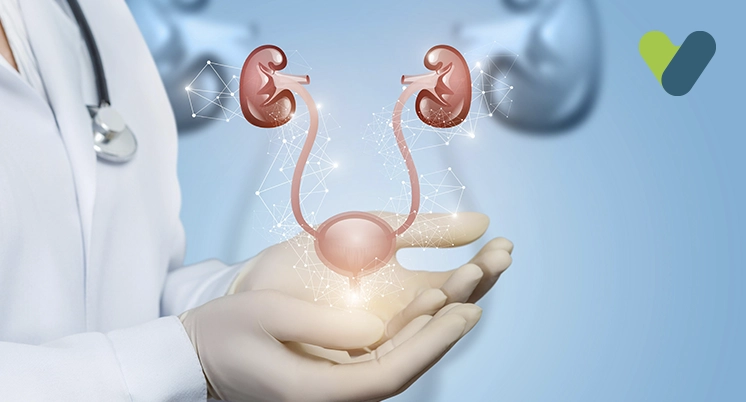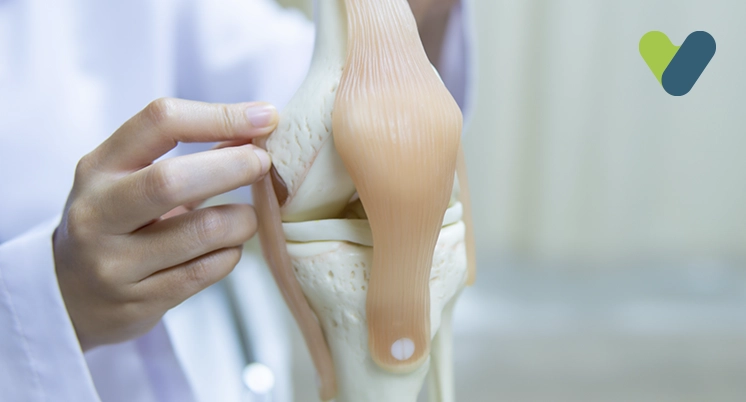An Overview
The spine is an intricate structure. It consists of 40 muscles, 30 bones, and several tendons as well as ligaments that aid in movement and maintain the skeleton. Due to the complexity of the spine, the back is prone to a variety of accidents and degenerative disorders.
In most circumstances, surgery is not the initial treatment option. Typically, doctors prescribe nonsurgical treatments at first that involve steroid injections, physical therapy, chiropractic care, medicines, massage, and weight loss. These treatments effectively alleviate pain for most patients. Nevertheless, when nonsurgical treatments fail to alleviate symptoms even after a specific time period, surgery can be a viable option. Your doctor will review the available treatment options with you depending on your medical history, symptoms, and desired outcomes.
Back surgery may provide relief from pain through two actions: by alleviating nerve pressure and stabilising the structure. A few surgical techniques target only one factor, while others handle both. Your symptoms and the reason of the pain or numbness will determine the type or mix of surgical procedures.
Diagnosis of Disc Surgery
During your consultation, you will be assessed by your physician for any kind of tenderness of your back. You may be asked to lie flat and move your legs according to instruction, so that the source of your pain can be determined.
Your physician may also conduct a neurological examination to assess your muscle strength, reflexes, walking abilities, and sensitivity to light touches or vibrations. In most herniated disc cases, a medical history and physical examination are sufficient for diagnosis. If your physician suspects another condition at play, they need to determine which nerves are affected and may recommend other diagnostic procedures like discectomy surgery.
Imaging tests
-
- X-rays: By themselves, X-rays cannot reveal herniated discs, but they can rule out other reasons of back discomfort, such as an infection, tumour, spinal alignment difficulties, or a fracture.
- CT scan: A CT scanner takes a series of X-rays from various angles and combines them to create cross-sectional images of the spinal column and surrounding structures.
- MRI: The examination confirms the location of the herniated disc and identifies the nerves that are impacted.
- Myelogram: Before a CT scan, the spinal fluid is injected with a dye. This examination can reveal spinal cord or nerve compression caused by multiple herniated discs or other disorders.
- X-rays: By themselves, X-rays cannot reveal herniated discs, but they can rule out other reasons of back discomfort, such as an infection, tumour, spinal alignment difficulties, or a fracture.
- Study of nerve conduction: Through electrodes attached to the skin, this test analyses electrical nerve impulses and muscle and nerve function. When a tiny current goes through the nerve, the electrical impulses in nerve signal are measured.
Electromyography (EMG): A doctor inserts needle electrodes through the skin and into several muscles during an EMG. The test measures the electrical activity of tensed and relaxed muscles.
Surgery to ease pressure
People who experience numbness, chronic pain, or weakness that travels down their legs or arms due to nerve compression may find relief from this type of back surgery. By making room in the spine, these treatments like discectomy surgery can relieve strain on the nerves or spinal cord. The patient can be discharged on the same day.
Most widely used surgery techniques for decompression are:
- Laminectomy: The goal of the procedure is to assuage pressure felt on the spinal canal, which may be brought on by spinal stenosis, arthritis, bone spurs, a degenerative disc disease, or other factors. Laminectomy is a surgical procedure that removes spine-related bone spurs and tissues to create space. It often includes removing a portion of the back (lamina) of the spine's vertebrae. Laminectomy widens the spinal canal to alleviate compression on the nerves or the spinal cord. The procedure is frequently performed during decompression surgery. The most prevalent cause of this pressure is overgrowth of the bone or bone spur within the spinal canal. The symptom develops in individuals with arthritis of the spine. The bone spurs are a consequence or can also be inherited. The procedure is often reserved for cases in which less invasive treatments, such as physical therapy, medicine, or injections, have failed to alleviate symptoms. Laminectomy may also be advised if the patient's symptoms are chronic or deteriorating rapidly.
- Discectomy: The procedure makes room in your spine by taking out a defective portion of a disc. During a disc surgery or a discectomy, the herniated vertebral disc is surgically removed, either in its entirety or in part. To release pressure on the nerve root, the outer section of the disc is first sliced, and the affected part of the disc is removed. The next step in discectomy is a dissection to access the spinal canal and remove any bone spurs or disc debris poking through the ligament. Since the specialists remove a major portion of the disc with this surgery, there is a low likelihood of a repeat disc herniation at the segment. The discectomy surgery can provide relief for sciatica-related discomfort and weakness as well.
- Lumbar discectomy: The procedure entails smaller incisions when compared to the open lumbar discectomy. In the spine, each vertebra holds a disc that acts as a cushion for support. From the spinal cord, large nerves called nerve roots emerge via foramina, tiny pores in the bones. Signals are sent and received by and from your body through these nerve roots. One of these discs may occasionally have ageing or injury-related weakening of its outer wall, and when this occurs, the disc's soft, inner region protrudes leading to a herniated or bulging disc. The protruding disc may put pressure on the spinal cord, resulting in symptoms like pain, tingling, or weakness in a surrounding body area. A minimally invasive lumbar discectomy involves the removal of a portion of the injured disc to reduce the pressure on your spinal cord.
- Foraminotomy: Like discectomy, the procedure entails enlarging the space surrounding one of your spinal bones. The operation releases squeezed nerves of pressure. Your spinal column protects your spinal cord, and the latter transmits the body's sensory information to the brain. The spinal cord is surrounded by nerves that transmit and receive this information. They exit the spinal column via an intervertebral foramen. Sometimes these apertures may reduce in size through wear and tear. When this occurs, the compressed nerve can result in discomfort, numbness in the arms and legs, and weakness. The precise position of the affected nerve can be determined by the symptoms throughout the spinal column. During the procedure, your surgeon through an incision on your back or neck, surgically enlarges your intervertebral foramen and remove the obstructions.
- Percutaneous Disc Nucleoplasty: It is a minimally invasive procedure that reduces the size of a bulging or herniated disc. Back pain or sciatica is brought on by pressure from the spinal disc on a nerve root or the spinal cord. Individuals experiencing back pain lack a definite sign of a herniated disc. However, intervertebral disc protrusion can be identified with an MRI examination. The protrusion may push on the nerves or spinal cord, resulting in chronic back pain that is recurrent or brought on by stress. Usually, conservative treatments work effectively for this type of back pain. After six weeks, if conservative treatment has failed, your spine specialist may recommend an intradiscal operation. During the procedure, the specialist injects a needle to treat the liquid core of the spine, which helps decrease the disc protrusion. By using this needle (cannula), a radiofrequency tool can access the disc's centre without posing any of the hazards associated with open back surgery. Only minor disc herniations or bulges that have not yet penetrated the solid fibre ring of the disc and are consequently inaccessible via open surgery are treated with nucleoplasty, a minimally invasive procedure–disc surgery removal of the disc material.
Nucleoplasty to treat a herniated disc surgery is considered safe for patients and offers results without the dangers and postoperative issues related to open back surgery.
Surgery for stabilisation
- Spinal fusion: The surgery is elected to increase stability, repair a deformity, and/or alleviate pain. A spinal fusion joins two or more vertebrae to the spine, while the mobility between them is permanently eliminated. Spinal fusion imitates the way fractured bones often heal. Your doctor will fuse your spine by inserting bone, or a substance that resembles bone, between two consecutive spinal vertebrae. The vertebrae may be held together with cages, metal plates, rods, and screws so that they may heal and fuse into a solid and single structure. Conditions like spondylolisthesis, degenerative disc disease, spinal fractures, scoliosis, and spinal trauma can all be treated by spinal fusion. It might be done to support the spine following a decompression procedure such a discectomy or laminectomy. The spinal fusion surgery types depend on the number of fused vertebrae, the hardware utilised, and whether the spine is approached from the rear or the front. An anterior lumbar interbody fusion, for instance, involves accessing the spine from the front and fusing two vertebrae in the region of lumbar.
- Artificial disc replacement: The goal of artificial disc replacement surgery is to alleviate pain by removing the problematic disc, while maintaining motion at the affected spinal segment using a prosthetic implant. Theoretically, this is comparable to the artificial hip and knee joint procedures that orthopaedic doctors have been utilising for decades. However, the difference is that just one of the three joints at each vertebral level is replaced. Fusion surgery remains the most common procedure, and many patients will be ineligible for disc replacement because it can only address a narrow range of disc pathologies. Certain types of fusion and artificial disc replacement share a number of common factors. For instance, an anterior approach (from the front) is employed for both anterior lumbar interbody fusion and artificial disc replacement, therefore the risks and potential consequences associated with this element of both surgeries are comparable. Patients must be as informed as possible and explore their options in depth with their treating physician before deciding on the procedure.
Risks of Disc Surgery
Recurring symptoms: Lumbar decompression surgery relieves leg discomfort and numbness. Some patients have symptoms following surgery, or they return after a few years. A weak spine, relapse after a slip disc operation, or new bone or ligament that presses on your spinal cord can trigger recurring problems. After surgery, nerve scarring can cause comparable symptoms to nerve compression. If your problems return, rehabilitation will be performed first before surgery. First-time operations are safer than repeat ones. Scarring around nerves is untreatable. After surgery, physiotherapist-recommended activities help minimise scarring.
Infection: Infections around the incision are common. Antibiotics do work, but medical conditions like diabetes and steroid use increase risk of an infection.
Thrombosis: Lumbar decompression surgery can cause leg blood clots called deep vein thrombosis (DVT). DVT can cause limb discomfort, edoema, and, rarely, pulmonary embolism. A blood clot fragment plugs a lung blood artery. Staying active during recovery or wearing compression stockings to enhance blood flow can lower the chance of blood clots.
Dural tear: All spinal surgeries—including lumbar decompression—can cause dural tears. The dura protects the spinal cord and nerves. After surgery, cerebrospinal fluid (CSF) may leak if the tear isn't discovered and corrected. Your surgeon will stitch a dural tear if it occurs. The repair usually solves the problem. In rare circumstances, more surgery may be needed.
CSF leakage: Lumbar decompression surgery may injure the nerve lining, causing CSF leaks. If found during surgery, it will be patched. After surgery, minor breaches might cause headaches and wound leakage. It may require more surgery.
Paralysis and nerve issues: Lumbar decompression surgery might cause leg numbness or weakness in certain patients. Paralysis is rare yet serious after lumbar decompression surgery. Other problems like spinal bleeding, spinal fluid leak, unintentional damage to the spinal cord's blood vessels or nerves during operation can occur.


